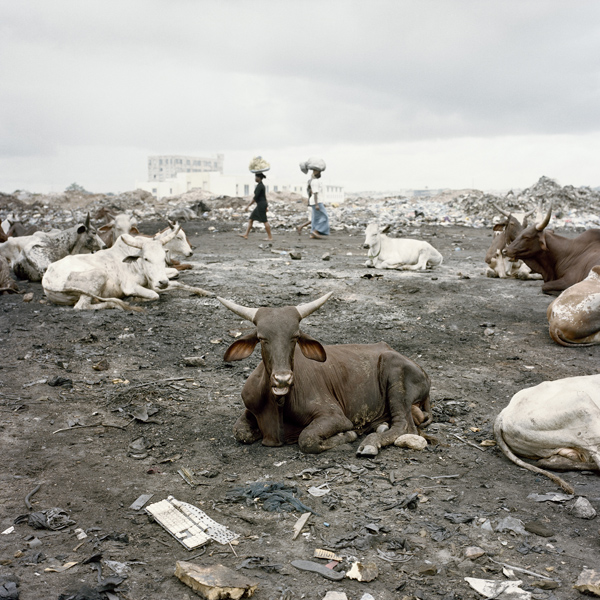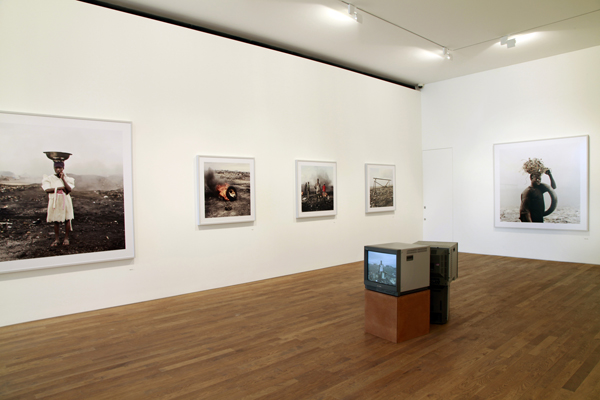Right about the time that cyberpunk classic Ghost in the Shell first went into print in 1987, so too did an academic journal looking to technological advancement as a mode for the indefinite survival of human life. Based on the philosophy that the digital world and human intelligence will allow for orderly and perpetual progress, Extropy: The Journal of Transhumanist Thought carved out a place for existential theory to converge with science and technology.

The extropian belief system proposed fantastical ideas of cryogenics, cyborgs and ‘Mind Uploading’ (a process whereby a computer might be programmed to emulate a human mind). Today biomedical engineering, mass communication and a tech savvy generation of consumers looks eerily like the human-machine society they once prophesied.
In the late 80s, while the developed world was pondering a computerized future, the village of Agbogbloshie in Ghana was still a wetland and a place of shelter for refugees. Not until the turn of the century did this impoverished area become the dumping ground for obsolete technology coming from industrialized nations all over the world. Receiving millions of tons of e-waste a year, often illegally, this unique landscape, as depicted in Pieter Hugo’s photographs, offers a powerful contrast to the extropian ideal.

Shortlisted for the Deutsche Börse Photography Prize, Pieter Hugos’ outstanding series Permanent Error records a place and people at the wrong end of the digital divide. Cinematic large-scale prints command attention in an otherwise easy viewing experience at the newly refurbished Photographers Gallery in Central London. While his fellow shortlisters John Stezaker, Christopher Williams and Rinko Kawauchi speak to the visceral language of image making, Hugos’ work jolts us into a bodily awareness of our place in the world.

From the blackened landscape, Hugo’s subjects of men, children and cattle confront the gaze of the cameras lens. His photographs offer a glimpse of the community who work amongst the dead electronics, exposing themselves to dangerous fumes in order to make a living. Through the process of extracting valuable metals, plumes of toxic smoke rise from burning plastics in what the artist describes as “end of the world stuff”.

What Hugo’s photographs reveal is the human drive to adapt in order to survive. While extropian predictions are disturbingly accurate in many cases, what they failed to consider was something their science fiction counterpart had right all along: the by-product of all of this innovation and ever-advancing technology is mass urban rot, the deteriorating of our natural environmental and, by default, the human condition.
Permanent Error is an important, timely and relevant body of work, worthy of a visit and certainly deserving of a win.
Pieter Hugos’ Permanent Error presented by The Photographers Gallery for the 2012 Deutsche Börse Photographers Prize runs July 13 – September 9, 2012.













